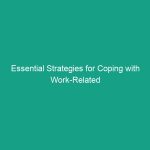1. Introduction
Good morning team! Today, we’re diving into a critical topic that affects all of us on the job site: Essential Tips for Driving in Construction Zones: Reduced Speeds & Awareness. As you know, construction zones can pose unique challenges and Hazards, making it essential for us to be extra vigilant while driving. Understanding how to navigate these areas safely not only protects yourself but also your coworkers and the public.
2. Understanding Essential Tips for Driving in Construction Zones
When we talk about driving in construction zones, we’re referring to the specific Procedures and Precautions needed to ensure Safety in areas where roadwork or construction activities are taking place. These zones often have altered traffic patterns, reduced speed limits, and unexpected Hazards, all of which require heightened awareness.
Many people mistakenly believe that construction zones are just typical road segments. However, these areas are dynamic environments where conditions can change rapidly. Adhering to Safety protocols in construction zones is crucial for preventing accidents and ensuring the well-being of everyone involved.
3. Key Hazards, Risks, and Safety Considerations
Driving in construction zones introduces several hazards and risks, including:
- Reduced Visibility: Construction equipment, barriers, and workers can obstruct views of the road.
- Unexpected Lane Changes: Traffic patterns often change, requiring drivers to be alert and adaptable.
- Increased Pedestrian Activity: Workers may need to cross the road unexpectedly.
- Heavy Equipment: Large machinery can appear suddenly and maneuver unpredictably.
- Road Surface Changes: Uneven surfaces and debris can pose risks to vehicles.
Ignoring safety protocols in these areas can lead to severe consequences—ranging from minor accidents to fatalities. For instance, a driver who fails to reduce speed might not be able to stop in time to avoid hitting a worker or another vehicle.
4. Best Practices, Procedures, & Actionable Advice
Here are some essential Best Practices for driving safely in construction zones:
- Reduce Your Speed: Always adhere to posted speed limits in construction areas. Lower speeds provide more time to react to sudden changes.
- Stay Alert: Minimize distractions in your vehicle. Put your phone away and keep your eyes on the road.
- Follow the Signs: Pay close attention to all signage, including temporary traffic signals and warning signs.
- Use Turn Signals: Always signal your intentions to other drivers, especially when changing lanes or turning.
- Watch for Workers: Be vigilant for construction workers and prioritize their safety. They are often in harm’s way.
- Be Prepared for Delays: Allow extra time for your journey, as construction zones can lead to slowdowns.
A real-world example to consider: last year, a driver was fined after failing to slow down in a construction zone, resulting in a near-miss with a worker. This incident serves as a stark reminder of the importance of vigilance.
5. Regulations, Standards, and Compliance
It’s vital to be aware of the Regulations governing construction zones. The Occupational Safety and Health Administration (OSHA) has strict guidelines regarding safety in these areas. Compliance with these regulations not only keeps you safe but also protects your coworkers.
For instance, osha mandates that all workers wear appropriate Personal Protective Equipment (PPE) and that vehicles operating in construction zones follow designated traffic patterns. Familiarizing yourself with these regulations can help you understand your responsibilities and the potential consequences of non-compliance.
6. Employee Engagement & Discussion
Let’s take a moment to discuss. Have any of you encountered challenges while driving in construction zones? What strategies have you found effective for navigating these areas safely? Your experiences can help us all improve our safety practices.
7. Conclusion & Key Takeaways
To wrap up, remember that driving in construction zones requires heightened awareness and adherence to safety practices. Here are the key takeaways:
- Always reduce your speed in construction zones.
- Stay alert and minimize distractions.
- Follow all posted signs and signals.
- Be prepared for unexpected changes and delays.
- Prioritize the safety of workers and other road users.
By applying these essential tips, we can significantly improve safety in construction zones. Thank you all for your attention and for your commitment to prioritizing Workplace Safety. Let’s make it a great day and drive safely!


